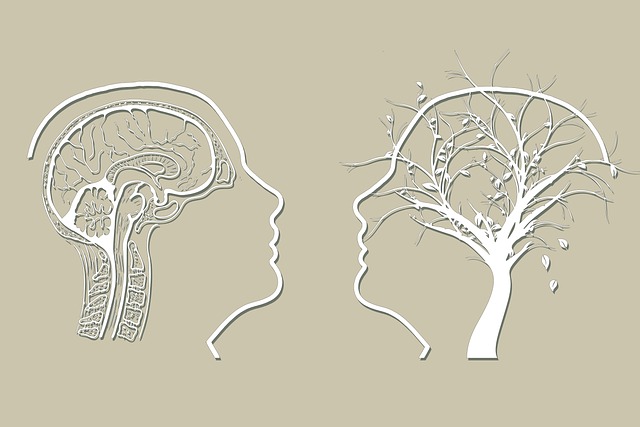Community outreach programs significantly enhance children's well-being by addressing mental health issues and pain management, often overlooked by traditional healthcare. These initiatives focus on early intervention, tailoring support to diverse communities' unique needs. Through emotional intelligence training, mental health education, and journaling exercises, children gain tools for self-awareness and resilience. Effective programs identify pain points through community engagement, leading to tailored solutions like the Mental Wellness Podcast Series. Integrating conflict resolution, mindfulness, and support groups fosters healthy emotional expression. Strong partnerships with local organizations ensure culturally sensitive care and accessible therapy. Success is measured by immediate behavioral changes and long-term sustainability, empowering communities to maintain mental health awareness and self-care practices for better pain management.
Community outreach programs play a pivotal role in fostering children’s well-being through targeted interventions. This article delves into the multifaceted approach of implementing successful initiatives, focusing on therapy and pain management. From understanding community needs to building strategic partnerships, each step is crucial. We explore effective strategies for identifying pain points, designing tailored programs, and measuring impact. By integrating these practices, communities can enhance access to essential services, ultimately improving children’s lives.
- Understanding Community Outreach: Why It Matters for Children's Well-being
- Identifying Pain Points: Assessing the Needs of Target Communities
- Designing Effective Programs: Strategies for Therapy and Pain Management
- Building Partnerships: Collaborating with Local Organizations and Stakeholders
- Measuring Success: Evaluating the Impact and Sustainability of Outreach Initiatives
Understanding Community Outreach: Why It Matters for Children's Well-being

Community outreach programs play a pivotal role in enhancing the well-being of children by providing them with essential resources and support often overlooked within traditional healthcare settings. These initiatives aim to bridge the gap between diverse communities and mental health services, focusing on early intervention and prevention strategies. By integrating therapy for children and pain management techniques tailored to cultural sensitivities, outreach programs foster a sense of belonging and accessibility.
Emotional intelligence, a key component in these efforts, equips both children and their caregivers with valuable skills to navigate and manage emotional challenges. Mental health education programs designed specifically for community outreach ensure that parents and guardians are equipped with the knowledge to recognize and address potential mental health concerns. Additionally, encouraging journaling exercises as part of these initiatives can provide a safe space for children to express themselves, enhancing their sense of self-awareness and resilience, which is vital for long-term mental wellness.
Identifying Pain Points: Assessing the Needs of Target Communities

Identifying pain points is a critical step in designing effective community outreach programs. Understanding the unique needs and challenges faced by target communities allows for tailored interventions that resonate deeply with those being served. For instance, when focusing on children’s mental health, assessing the prevalence of therapy for children within the community can reveal gaps in access to care. Some areas might struggle with limited resources, while others may face stigma associated with mental illness, hindering parents from seeking support for their children.
This process involves engaging with community leaders, conducting surveys, and holding focus groups to gather insights on pressing issues like pain management for children and the role of Mental Illness Stigma Reduction Efforts. By listening to the voices of residents, organizations can develop targeted initiatives, such as producing a Mental Wellness Podcast Series Production, to foster Mental Health Awareness and better serve the community’s specific requirements.
Designing Effective Programs: Strategies for Therapy and Pain Management

Designing effective community outreach programs for therapy and pain management requires a nuanced approach tailored to diverse populations, especially when focusing on children. Programs should incorporate strategies that foster inner strength development in young individuals, empowering them to navigate challenges with resilience. By integrating conflict resolution techniques and communication strategies, these initiatives can create safe spaces where children learn to express their emotions healthily and resolve disagreements constructively.
Engaging activities that promote emotional intelligence, mindfulness, and positive self-talk are essential components. These methods not only aid in therapy but also contribute to effective pain management by teaching children coping mechanisms. Through interactive workshops and support groups, community outreach can equip children with the tools needed to transform their experiences into opportunities for growth and enhanced well-being.
Building Partnerships: Collaborating with Local Organizations and Stakeholders

Building strong partnerships is a cornerstone of successful community outreach programs, especially when focusing on therapy for children and pain management. By collaborating with local organizations, such as schools, community centers, and cultural groups, healthcare providers can better understand the unique needs of the community they serve. This partnership approach ensures that services are tailored to address specific challenges, like implementing conflict resolution techniques or integrating self-care practices, while also promoting cultural sensitivity in mental healthcare practice.
Engaging with local stakeholders allows for a more holistic understanding of the social and environmental factors influencing children’s well-being and pain management. These partnerships can lead to innovative solutions, shared resources, and increased accessibility to therapy, ultimately enhancing the overall health and resilience of the community. Through collaborative efforts, organizations can break down barriers and create sustainable change, ensuring that every child has access to the care they need.
Measuring Success: Evaluating the Impact and Sustainability of Outreach Initiatives

Measuring success is a critical component of any community outreach program, especially those focused on children’s mental health and pain management. Evaluating the impact involves assessing both short-term outcomes and long-term sustainability. In the immediate term, tracking improvements in attendance, engagement levels, and individual behavior changes can provide valuable insights. For instance, increased participation in therapy sessions or adoption of self-care routines developed during outreach initiatives indicate successful interventions.
Looking beyond the immediate effects, sustainability is key to ensuring the longevity of positive outcomes. Outreach programs should aim to empower communities with knowledge and skills that foster mental health awareness and empathy building strategies. By integrating these practices into daily lives, individuals can better manage pain and promote their overall well-being. Regular follow-ups, community feedback mechanisms, and adaptive planning based on observed trends are essential to gauge the ongoing impact and make necessary adjustments to ensure the program remains relevant and effective.
Implementing successful community outreach programs requires a holistic approach, addressing children’s well-being through tailored therapy and pain management strategies. By identifying community needs, fostering partnerships, and measuring impact, initiatives can achieve lasting positive outcomes. This collaborative effort ensures that resources are effectively directed to where they matter most, ultimately enhancing the overall health and happiness of target communities.














